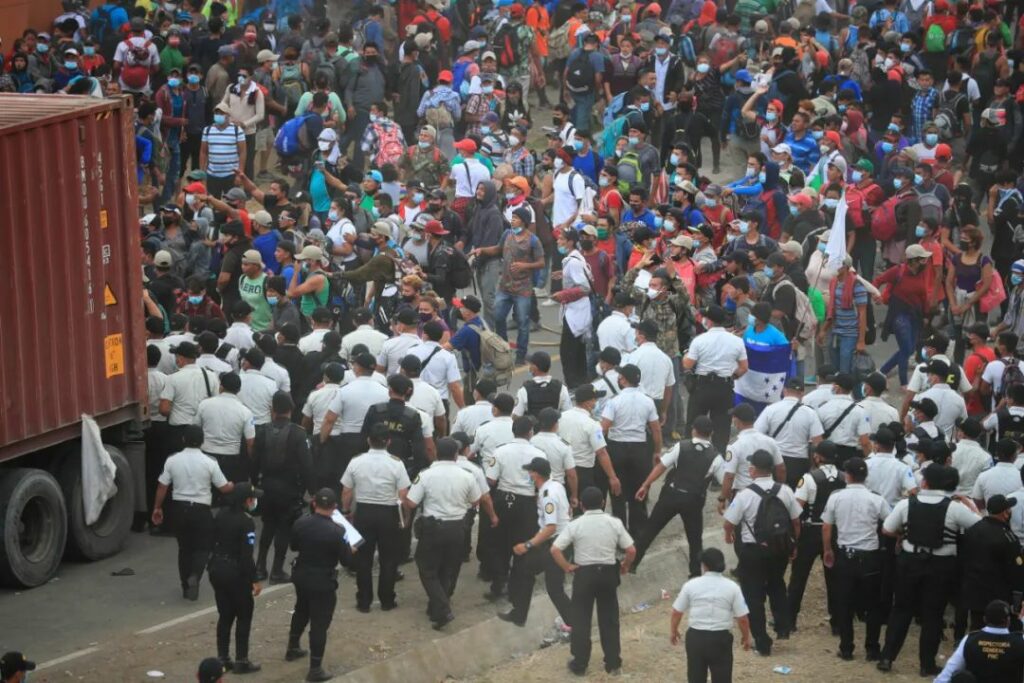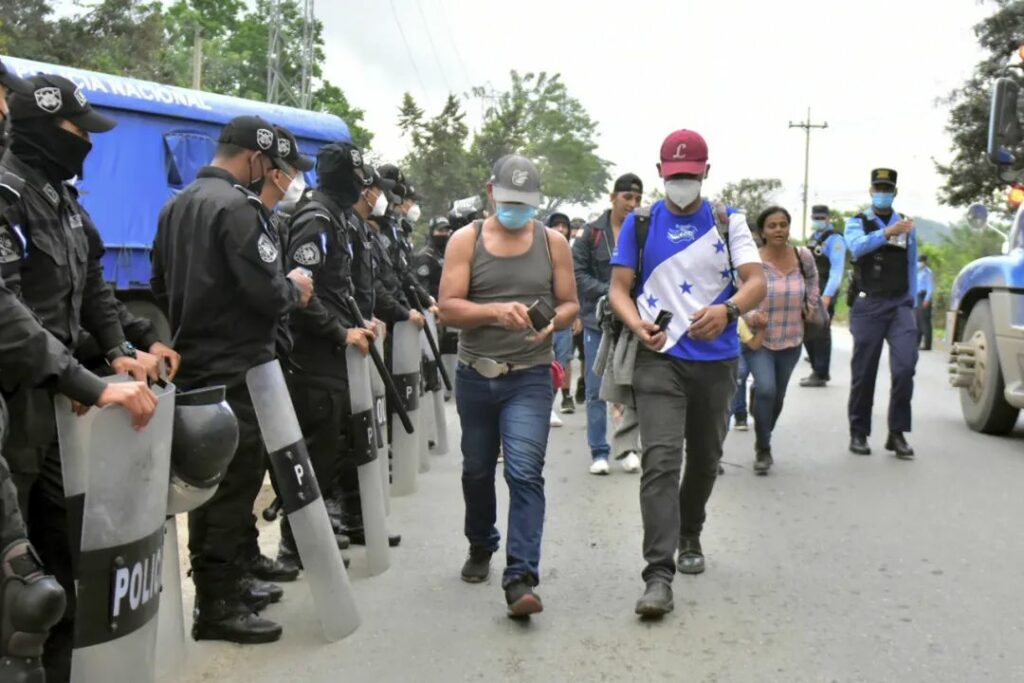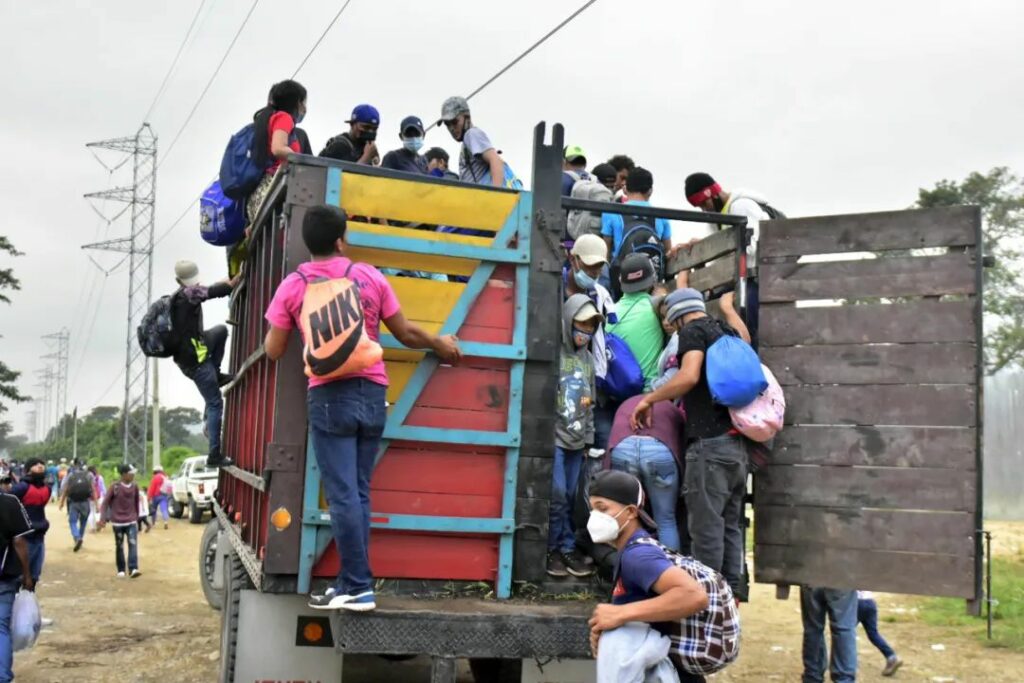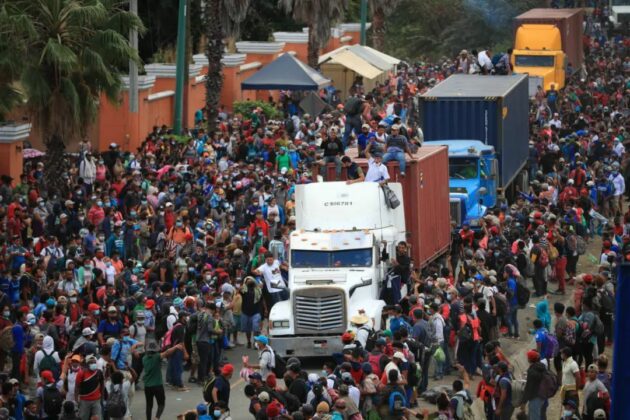Recently, a total of about 9,000 Central American people have set out from northern Honduras to Guatemala in order to reach their final destination, the United States.
Guatemala’s “human wall” blocking
Since the 13th, hundreds of Central American people have set out from the northern city of San Pedro Sula in Honduras.
By the 15th, thousands of people had formed an “immigrant caravan” by walking and riding to the border area with Guatemala.
According to media reports, after entering Guatemala on the 18th, nearly 6,000 immigrants traveled more than 40 kilometers along the road to the town of Badoundo, Chiquimula Province, and were blocked by multiple walled by local security forces.
Videos released by the dangerous government on the Internet show that the security forces formed a “human wall” to surround the crowd, trying to force them to the hillside behind them, and throwing tear gas and smoke bombs to disperse the crowd.
Some people tried to cross the “human wall” and were beaten with batons by security forces.
After the conflict, people were forced to retreat to the mountains, and some of them planned to find opportunities to break through again.
“They’ve been trying to get through, but we’re not going to give in,” said Alejandra Mena, spokesman for the Bureau of Critical Migrants.
According to the dangerous government, Guatemala has returned about 1,000 people to Honduras from 15 to 16.
According to the data, as of the evening of the 18th local time, the Guatemalan immigration department had repatriated 2,374 people to Honduras.

Several cases of COVID-19 have appeared in the team.
In mid-January, the number of confirmed cases of COVID-19 in Guatemala and Honduras exceeded 140,000 and 130,000 respectively.
The Guatemalan government requires inbound immigrants to have negative nucleic acid test results and meet the relevant immigration inspection and epidemic prevention requirements before entering the country.
However, local health authorities said that some immigrants used fake test results to try to “get through”.
On the 17th, Guatemala’s health department announced that 21 cases of COVID-19 were found in the immigration team.
The Honduran government issued a proclamation on the 17th, requesting Guatemala to conduct an investigation into the actions of the security forces and to clarify that only when the whole region is united can continue to cooperate to deal with illegal immigration.

The Guatemalan government issued a notice on the 18th to respond that Honduras has not taken the necessary measures to prevent large-scale people from leaving the country, and said that these migrants are in a vulnerable state and that some of the transiting areas are exposed to the coronavirus epidemic and its derivative risks.
Even if the “immigrant caravan” team crossed the Guatemalan barrier, they would face the obstruction of Mexican security forces on the southern border of Mexico.
On the 14th, Mexico’s National Immigration Service said that it had sent 500 staff to the border area to maintain order and would strengthen the tracking of immigration activities in many southern states.
On the same day, Guatemala announced that it would enter an early warning state in the next 15 days.
Mexican Deputy Foreign Minister Maximiliano Reye said on the 19th that all immigrants arriving in the border area must produce a recent negative test for COVID-19 to enter the country legally.
On the 11th of this month, representatives of the governments of Mexico, Guatemala, Honduras and El Salvador visited the border area between Guatemala and Honduras to discuss a solution to migration.

Go north to get out of the survival crisis.
According to local media analysis, in November last year, hurricanes ETA and Yota caused serious economic losses in Honduras and other countries, exacerbating people’s poverty, public security and other issues.
Some people hope to go north to the United States to get rid of the current miserable life.
Some people say that the growing existential crisis such as hunger and homelessness has prompted them to join the team.
Maria Jesús Paz is a mother of four, and her family is homeless by the hurricane.
“We couldn’t feed our kids, and thousands of people were sleeping on the street … so decided to do so, even though knowing that they might be killed,” she said.
Since 2018, the scale of illegal immigration to the United States and Central America has been expanding.
Some people in Honduras, Guatemala and El Salvador gathered through social networks to travel thousands of kilometers to the U.S.-Mexico border by hitchhiking and walking, seeking to enter the United States in various ways.
The local media called this form of immigration a “immigrant caravan”.



